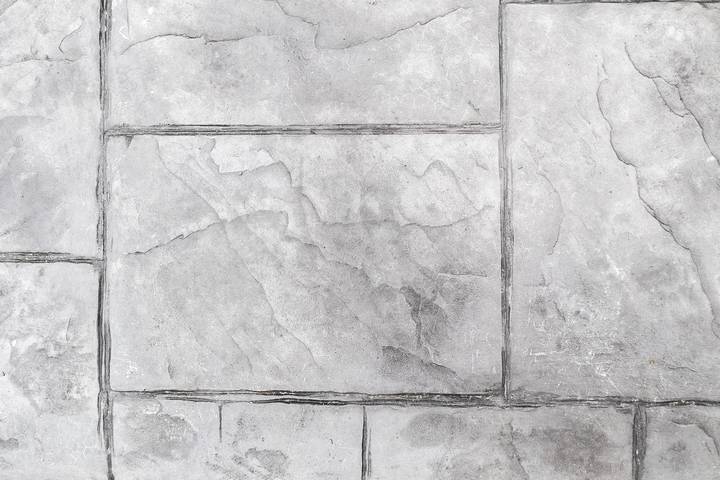Concrete is a surprisingly flexible type of flooring used in dynamic environments like retail, warehouses, mechanic garages, and showrooms. Concrete is durable, reliable, and always low maintenance, and it can outperform many other flooring materials.
If you’re unfamiliar with concrete, there are many different types of concrete flooring, each tailored to a specific aesthetic or purpose they serve. Here are the most popular types of concrete flooring used in modern construction.
Type #1: Troweled Concrete Flooring
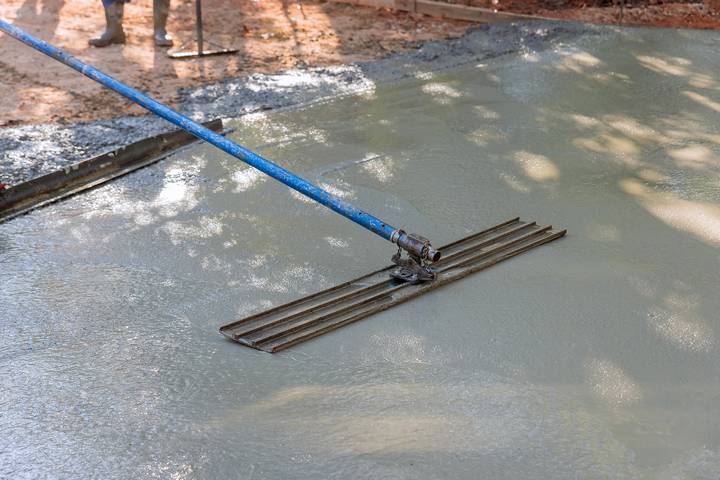
A troweled concrete finish is the most common and basic concrete style of flooring you’ll see. Concrete is laid and levelled. Then, a trowel – i.e. a flat steel blade with an attached handle – smoothes and fine-levels the surface as it’s pushed and pulled across the concrete.
Troweled concrete is used in environments where the function of flooring is more important than the aesthetic.
Type #2: Broom Concrete Flooring
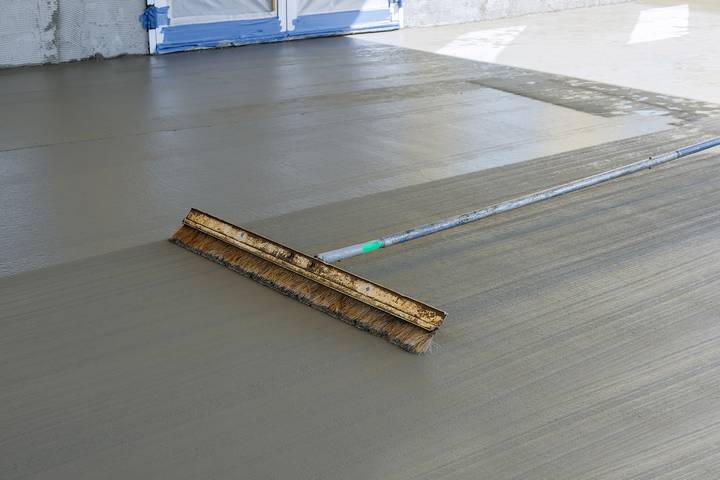
A broom finish added to concrete is exactly what you might imagine. A rough-textured surface is created by dragging a broom across a trowelled surface before it’s dried. The small ridges left behind provide traction and add slip resistance.
You won’t see broom concrete used inside often, but it’s a popular choice outdoors on patios and driveways and used in public walkways minimizing the risk of a slip-and-fall.
Type #3: Epoxy Concrete Flooring
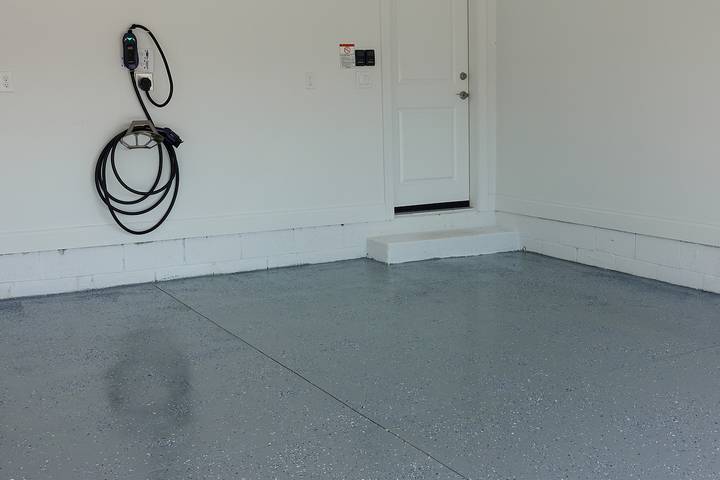
Epoxy is an adhesive used to bond concrete. Epoxy is a professional finishing concrete material that effectively seals your floor so that it is resistant to spills, moisture, staining, chemicals, and microorganisms.
For high-traffic, heavy-use industrial flooring that will be put through its paces, epoxy is a recommended type of concrete flooring. As a finish, an epoxy concrete floor can be made to look like almost anything, from quartz to metallic.
Type #4: Stamped Concrete Flooring
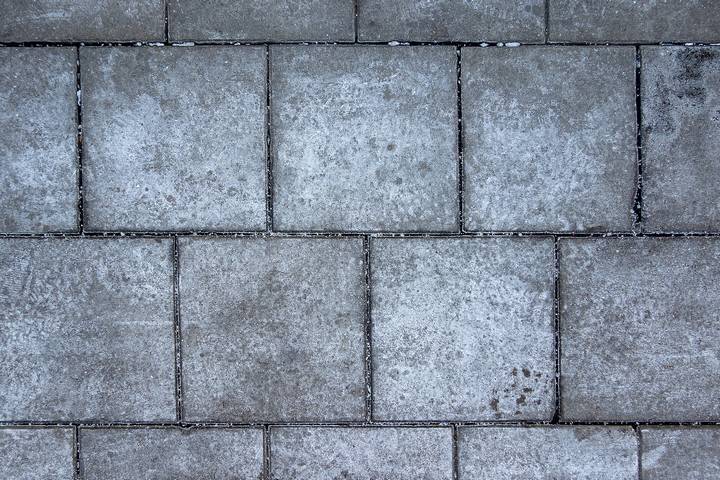
Stamped concrete is when a pattern is pressed onto freshly levelled concrete to create the aesthetic of slates, brick, or tile. What you end up with is something very intelligent and stylish.
That’s why it’s often applied in settings where the aesthetic is as important or more important than function, where you will often find stamped concrete flooring on patios, driveways, and sidewalks.
Type #5: Salt Concrete Flooring
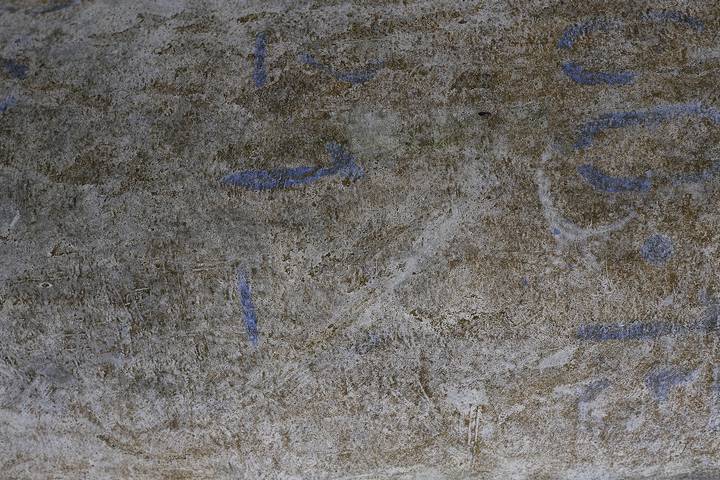
Salt concrete inserts coarse rock salt crystals using rollers over freshly laid concrete. After the concrete is set, the rock salt crystals are washed away with water. The result is a highly decorative finish with a rough texture.
Salt concrete finishes are preferred in swimming pools where you need skid resistance. It will let people get around safely and minimize the risk of injury.
Type #6: Swirl Concrete Flooring
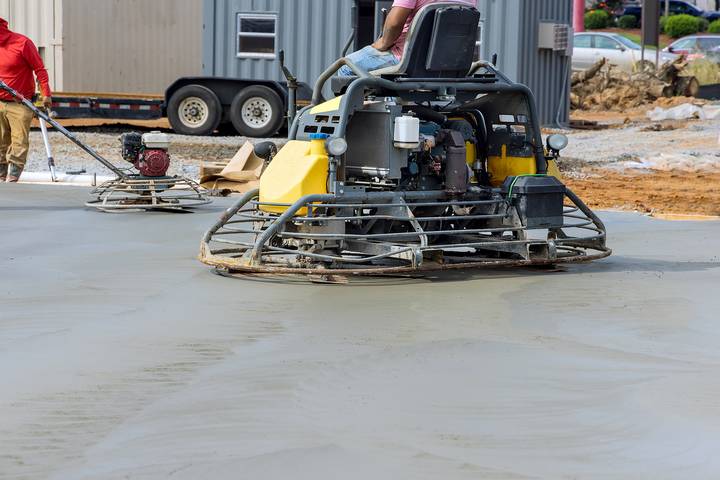
Swirl concrete is when overlapping circular patterns are uniformly smeared into the concrete surface before it’s dried. The pattern adds a lot of beauty to a property, especially outdoors.
A swirl finish provides some grip and texture and can be safer to walk on when wet than smooth concrete. Swirl concrete can also be adjusted to form other geometric shapes, arc patterns, and swirl imprints.
Type #7: Polished Concrete Flooring
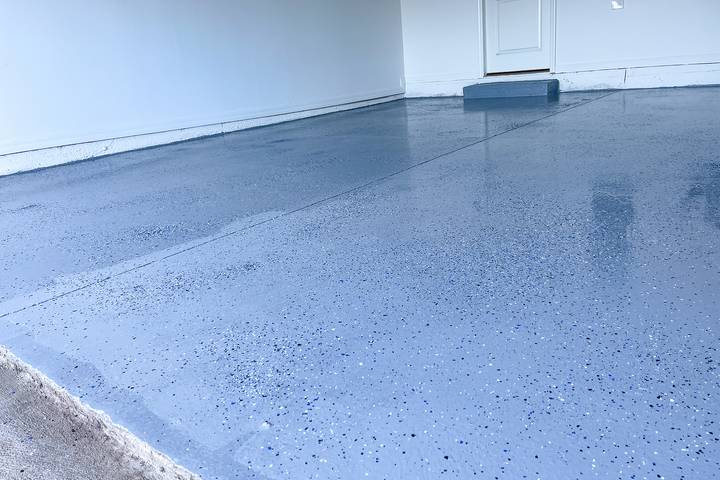
To enjoy concrete with a shine, it requires a fine polish. A polished concrete finish uses specialized tools and chemicals to get the texture right. The surface is ground down with abrasive pads, similar to sanding wood. Then, a seal is applied to get the sheen.
You will often find polished concrete in high-end environments like art galleries, museums, and similar formal venues. Polished concrete can also provide a nice contrast to industrial, rustic materials in the room.
Type #8: Colored Concrete Flooring
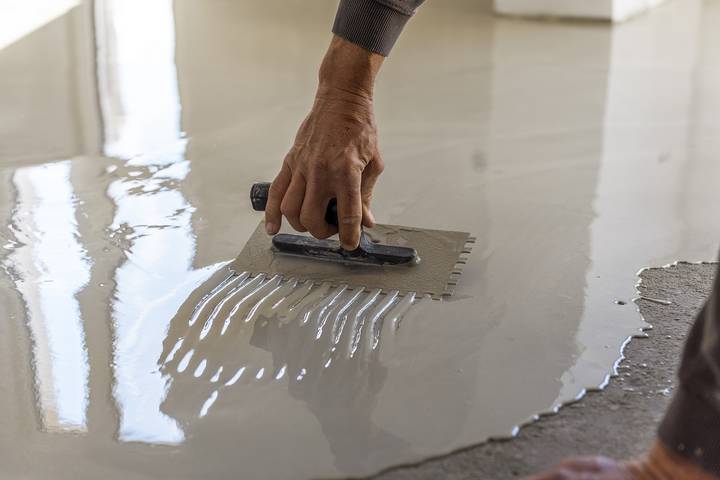
Coloured concrete is all about style and aesthetics. Coloured concrete is done by either pigment or post-cure staining to deliver the intended look. If it’s a pigment, it’s added to the concrete before pouring. This would understandably colour the entirety of what’s being poured.
If it’s staining, the stain can be applied to concrete at any time to get the coloured finish and is a lot more precise. To protect the stain, a seal is usually applied afterward to complete the process.
Type #9: Acid-Stained Concrete Flooring
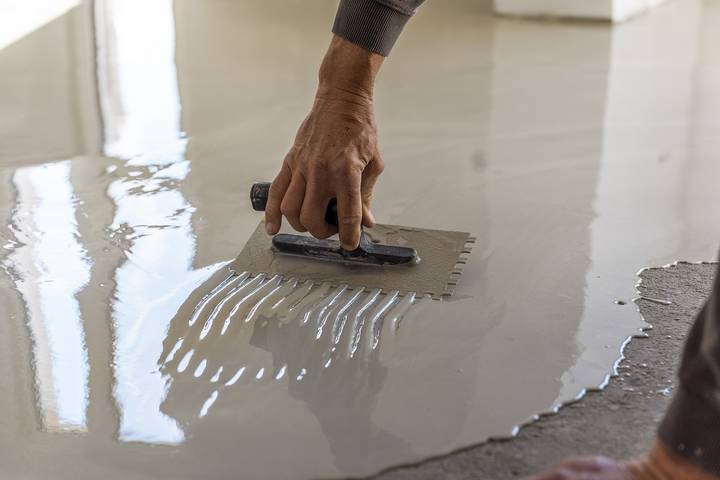
Acid-stained concrete uses acid to provide some colour. Using hydrochloric or phosphoric acid mixed with salt, it’s applied to cured concrete. What it does is the acid opens the pores in the concrete. The salt then causes a chemical reaction that purposefully discolours the floor.
Afterward, the concrete flooring is left with a very interesting look. If you do this, ensure a concrete flooring contractor is experienced with acid-staining, as it’s not easy.
Type #10: Exposed Aggregate Concrete Flooring
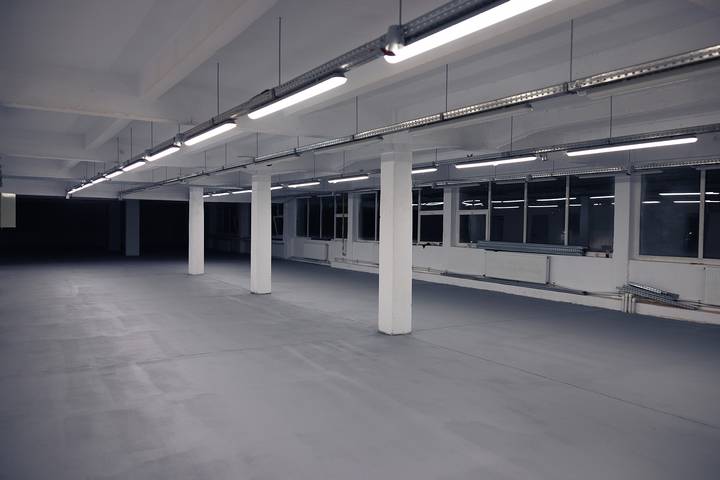
Exposed aggregate concrete is used for driveways, sidewalks, and patios. Textured small stones and pebbles are inserted into the concrete and distributed evenly, and when dried, it creates a very decorative finish.
This is done from a concrete laying perspective because it requires the top layer of concrete, no more than a few millimetres thick, to be removed. This exposes the stone, sand, and aggregate underneath and gives the concrete its unique look.

